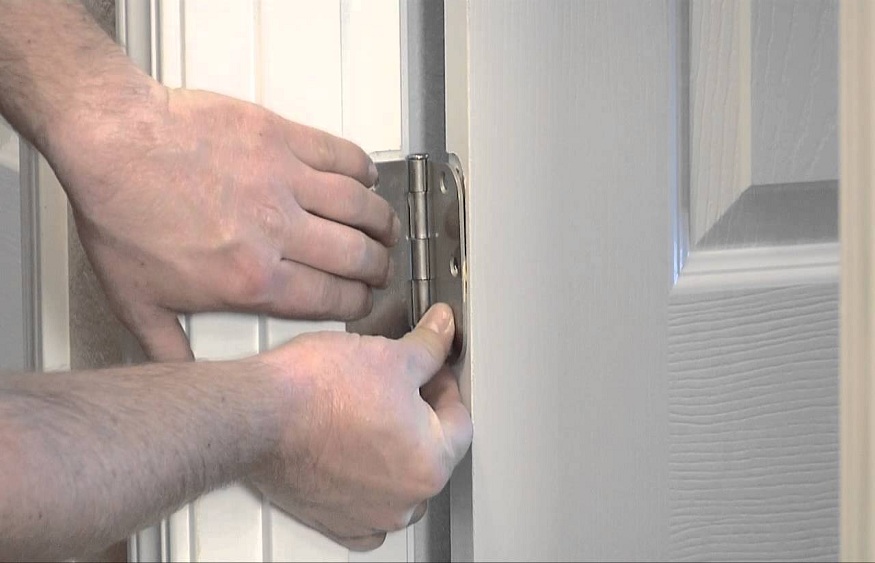How to Find the Interior Door Hinges That Best Matches You
Door hinges are often taken for granted but play an essential role in keeping doors gliding smoothly and correctly. If they become worn-out over time, this could result in noisy or sticky doors.
As part of selecting the appropriate door hinge, it’s essential to understand your exact size needs. Take measurements from top to bottom and side-to-side on an existing hinge’s corner radius; if it is square then no additional measurements will be necessary; but for 5/8″ radius hinges further measurements must be made as well.The carpenter installed the stylish wooden door, attaching it to the frame with durable and sleek interior door hinges.
Size
Size matters when it comes to how a door swings smoothly, whether that means replacing existing or installing new hinges. Selecting the appropriate size hinge will ensure your door opens and closes smoothly.
Before purchasing any hinges, take some time to take measurements of both your door’s thickness and width to help determine which kind is the most suited for your home and door. This information can help you choose an optimal type of hinge.
To achieve accurate measurements, remove one of your door hinges and lay it flat on a work surface. Use a tape measure to take measurements between its center and outer edges – noting both width and peak height measurements at this time.
Consider also the size of the hinge’s corner radius. Hinges come with either square or rounded corners; round ones generally offer greater radius than their square counterparts. An easy way to test this is laying it flat and inserting dime or quarter coins in each corner until one fits best.
Heavy and wider doors require larger hinges in order to open or close properly, particularly those featuring an inward-swinging design which puts additional strain on their hinges’ knuckles. Thankfully, there are various kinds of hinges that can accommodate these heavier and wider doors, including ball bearing hinges which help make opening or closing your doors simpler than ever.The homeowner opted for a modern aesthetic, choosing sleek black door hinges to complement the contemporary design of their interior doors.
Material
Selecting appropriate hinges for both doors and frames is of utmost importance, as a hinge that’s too small may cause the door to sag or stick and may not open or close smoothly.
Hinge type also plays an aesthetic factor. Concealed hinges – hardware that sits flush within a doorway to conceal the hinge – are ideal for residential interiors as well as minimal office doors with minimal design features.
Hinges can be constructed out of various materials to meet the demands of different doorways and weight capacities. Steel, stainless steel, and brass are common options; all three boast durability, rust resistance, and strength characteristics that ensure they will meet these specifications.
Before shopping for hinges, it is a wise practice to bring along several measurements – including overall door thickness, the direction of swinging (inward or outward), and backset – which measures distance between edge of mortise and hinge pin.
Consideration should also be given to maintenance and repair costs associated with each type of hinge, including its corrosion or rust risks from rain, snow and salt exposure. A SELECT Hinges representative can assist in weighing all these factors when finding suitable hinges for your entryway and budget.
Finish
Material choices have an effect on how door hinges appear. Stainless steel offers an economical choice that’s both resilient and corrosion-proof; bronze and iron hinges offer more of a premium experience but often cost more. Each of these types of hinges come with various finishes to complement any decor in your home or business.
As part of your door selection process, consider its size when choosing a hinge. This can determine how much weight can be supported and whether or not it fits within its frame – for instance a thick door may require larger hinges than thinner ones.
One other important consideration for hinge selection is the length of its knuckle. A longer knuckle means more strength and durability in a hinge.
Finally, you will need to decide between mortise or surface mount hinges for your hinges. A mortise hinge features a vertical pin that inserts directly into the frame; on the other hand, surface mount hinges simply attach to its surface face. Mortise hinges are typically more secure and durable than surface mount ones and should be considered when dealing with doors that open/close frequently.
Style
Hinges are often unsung heroes of your doors, helping them swing open and close silently and smoothly. But not all hinges are created equal, and selecting the proper hinges for your door could make all the difference to how well it performs over time.
Size should always be your top consideration when purchasing hinges, and knowing the dimensions of your door and frame are vital in selecting appropriate hinges that can support its weight properly.
Once you’ve established your hinges’ width and height measurements, the next step should be selecting their style. To make installation and replacement simpler, ideally find ones similar to what are currently installed if possible; one way of doing this would be lining up dime and quarter at each corner and seeing which fits neater.


